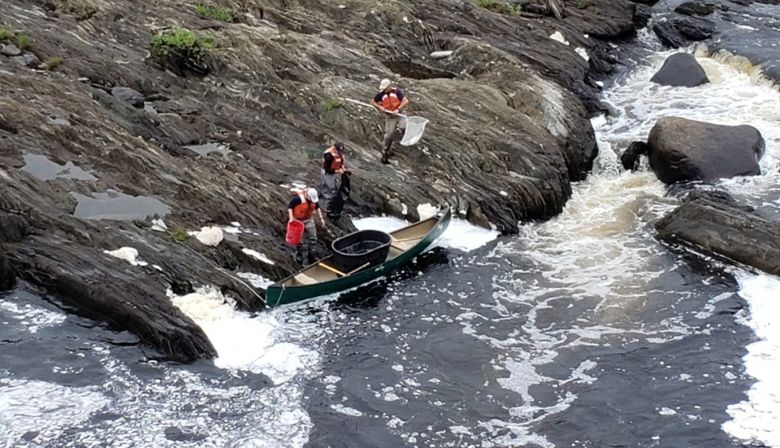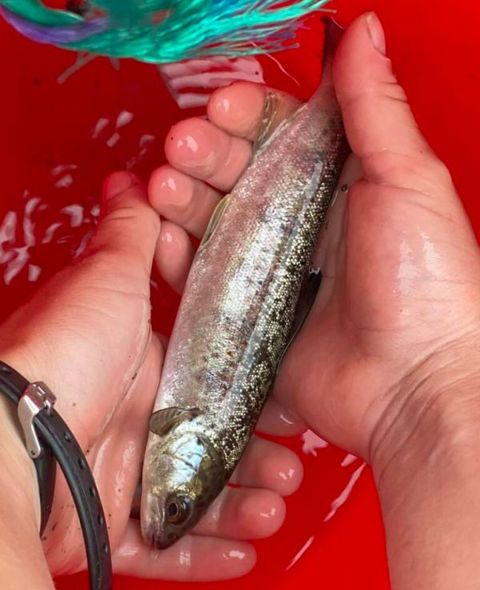The rescued Atlantic salmon was described as having numerous health issues and injuries including water lice, scrapes along the top and sides, an abrasion on its underside, two split fins and a bruised snout.
Ledwin said the fish face a gauntlet of predators and natural obstacles that can cause such conditions.
Representatives of the Atlantic Salmon Federation and Trout Unlimited criticized Brookfield’s dam operations in terms of their impact on the fish.
“The speculative and sensationalized claims by these groups reflect their singular focus on forcing the removal of dams on the lower Kennebec,” said Kessel, who pointed to some potential negative impacts from doing so.
That includes a potential loss of river recreational use, having a local source of renewable energy, jobs and tax incentives.
Brookfield is required under the federal Endangered Species Act to have procedures in place to assist or rescue any Atlantic salmon that are adversely impacted by their operations.
The Atlantic Salmon Federation and Trout Unlimited point out that Brookfield has for 16 months been operating the Lockwood Dam without “take” protection under the federal Endangered Species Act, which prohibits harassing, pursuing, hunting, shooting, wounding, killing, trapping, capturing or collecting the Atlantic salmon.
“What transpired at Lockwood [on June 15] may be routine for Brookfield, but it is unacceptable and illegal,” said John Burrows, director of U.S. Programs for the Atlantic Salmon Federation.
“Looking at what we need to do to recover salmon in the Gulf of Maine, the native population, we’ve got to make the Kennebec work,” he said.
With a take permit in effect, some of the negative outcomes that could occur during a rescue operation are considered allowable.
Brookfield is taking interim measures while following Endangered Species Act guidelines to assist or rescue Atlantic salmon impacted by its dam operations.
“We continue to have ongoing engagement with federal fisheries agencies around initiatives already underway to ensure protection of fish species,” Kessel said.
“An Interim Species Protection Plan for Shawmut and a Species Protection Plan for Lockwood, Hydro Kennebec, and Weston [dams] was filed on June 1, well in advance of a May 2022 deadline,” she said.
The struggle on the Kennebec River continues.
Endangered Atlantic salmon are being stocked and reared in the Sandy River in the hope they head down the Kennebec River to the sea, survive, return and spawn.
Brookfield Renewable continues to produce hydroelectric power for its customers with its dams under federal guidelines. At Lockwood, salmon at least have a chance to enter the fishway and get into the holding tanks to be transported upriver.
The hope among scientists is that all four of the Kennebec dams, if still operating, eventually will have functioning fishways that will allow Atlantic salmon and other fish to safely get upriver.
In the meantime, conservation groups are working to help the fish survive and reproduce in Maine rivers.


